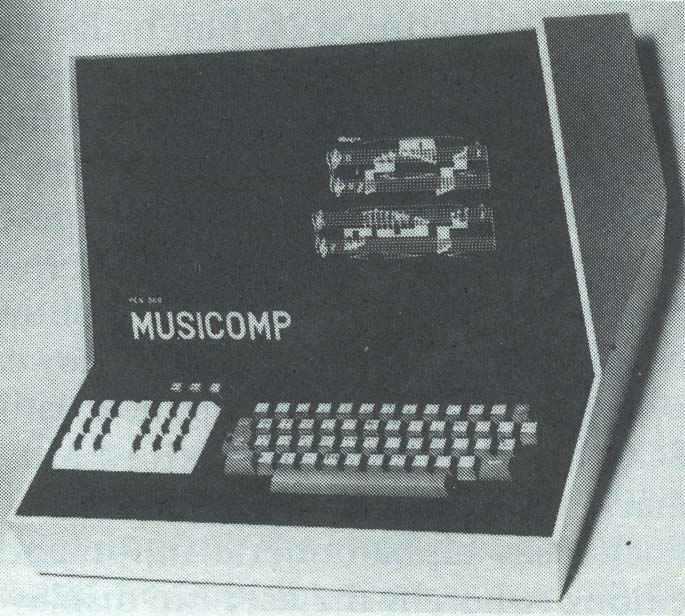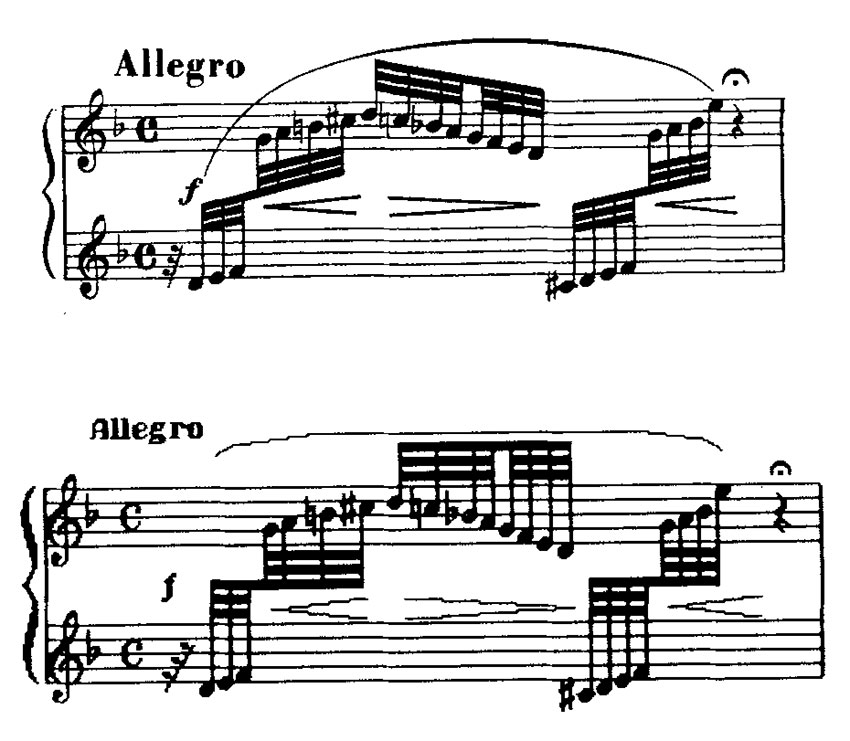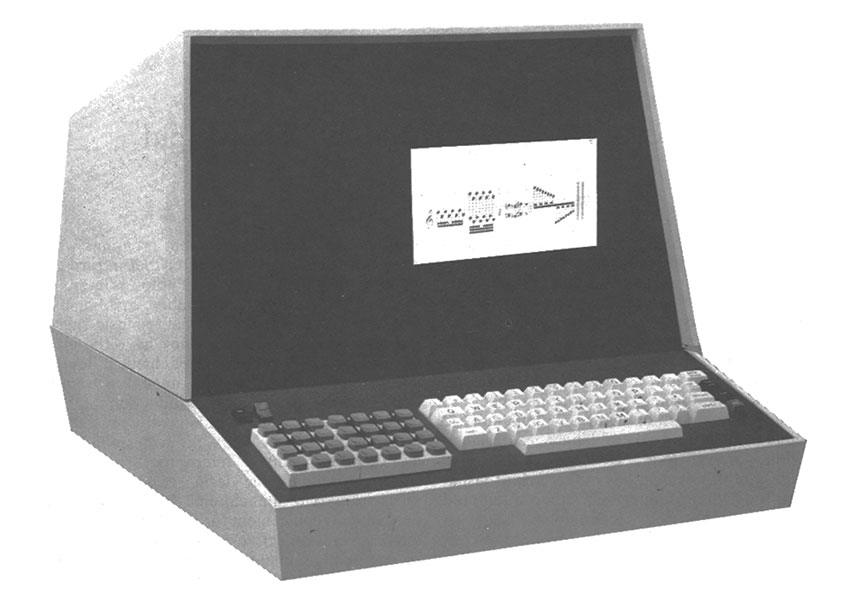Music Printing History: MusiComp
1976
In 1976, Armando dal Molin developed the MusiComp. The MusiComp was a computer used specifically for notating music. It consisted of two keyboards. The left keyboard set the pitch while the right keyboard contained music symbols and letters. The music appeared on the screen, and the machine could store up to 30 pages of music in a microcassette. The Musicomp was used to provide ready-to-publish scores for several publishing companies.

The MusiComp

Hymn “A Mighty Fortress is our God.” This illustration was prepared in 1984 by Armando Dal Molin using his MusiComp typesetting system. Most elements were set by computer; a few were added by hand. This example appeared in the Directory of Computer Assisted Research in Musicology 3 (1987), 42.
How it Works
Each note is entered as a combination of pitch, a character and one or more spaces. The left keyboard consisted of 28 keys that selected the pitch with a span of four octaves, but could also encode an additional octave above and below. A pitch was selected with the left keyboard, and then the music symbol was selected with the right keyboard. In addition, text could also be added with the right keyboard. The right keyboard was capable of encoding 112 music symbols including grace notes, cue notes, dynamics, and other embellishments, and 128 text symbols that included standard fonts, italic fonts, roman numerals, and several special symbols.
The space bar was used to space the music according to the duration of the music symbols. A chord was created by entering several notes and then pressing the spacebar. Several modes also allowed for the use of multi staves, beams, slurs, octave lines, arpeggios, and other music symbols. Shortcuts were also included so that the operator only had to press the left keyboard once and enter successive notes quickly.
Once entered, music could be edited and saved to the attached microcassette which was capable of storing 30 pages of music. The cassette could then be used to print the music on another machine.

The top example was typed on the Music Writer in 1962. The templ, beams, slur, crescendos and lines were added by hand. The lower example is an “instant print” without retouching, of the same music as it appears on the PCS-500 [MusicComp] screen.
